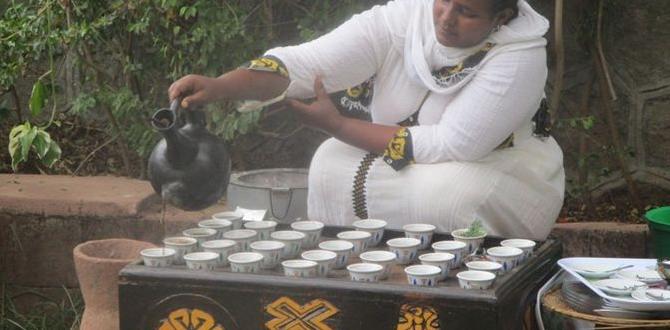The best Belgium no-crowds itinerary focuses on uncovering charming smaller towns and experiencing popular spots during off-peak hours. This guide helps you create a relaxed, authentic Belgian adventure, avoiding the usual tourist throngs for a more personal discovery of this beautiful European gem, perfect for families and solo travelers alike.
Planning a trip to Belgium can sometimes feel overwhelming, especially if you want to experience its magic without getting lost in the hustle and bustle of peak tourist season. Many travelers dream of exploring picturesque medieval towns, savoring world-class chocolate and waffles, and marveling at historic architecture, but the thought of crowded squares and long queues can dim that excitement. If you’re looking for a more serene and authentic experience, a well-crafted itinerary is key. This guide is your essential companion to discover Belgium’s hidden gems and enjoy its popular attractions at your own pace, ensuring comfort and ease throughout your journey.
Why Choose a No-Crowds Belgium Itinerary?
Belgium, while compact, packs a mighty punch with its rich history, stunning art, and delicious culinary scene. However, its most famous cities, like Bruges and Brussels, can become incredibly busy, especially during summer months or holidays. Opting for a no-crowds itinerary allows for a more intimate and enjoyable travel experience.
- Deeper Exploration: Without the pressure of crowds, you have more time to linger, observe details, and truly immerse yourself in the atmosphere of each location.
- Authentic Encounters: You’re more likely to interact with locals and experience the true rhythm of Belgian life when you’re not surrounded by throngs of tourists.
- Reduced Stress: Traveling at a slower pace, with fewer queues and more personal space, leads to a more relaxing and enjoyable trip overall.
- Better Photo Opportunities: Capture those iconic Belgian scenes without a hundred other people in your frame!
- Comfort and Convenience: Imagine enjoying a Belgian waffle without a long wait, or exploring a historic guildhall at your leisure. This is the essence of a no-crowds experience.
Planning Your No-Crowds Belgium Adventure
The secret to a successful no-crowds itinerary lies in smart planning. This involves choosing the right time to visit, selecting destinations wisely, and being strategic about when you visit popular sites.
Best Time to Visit for Fewer Crowds
While Belgium is beautiful year-round, certain periods offer a significantly more relaxed experience. Consider these shoulder seasons:
- Spring (April-May): The weather begins to warm up, flowers are in bloom, and the crowds are generally smaller than in summer. It’s a delightful time to explore.
- Autumn (September-October): Enjoy crisp air, stunning fall foliage, and a noticeable drop in tourist numbers after the summer rush.
While winter (November-March) offers the fewest crowds and can be magical with holiday markets, be prepared for colder weather and potentially shorter opening hours for some attractions. Summer (June-August) is the peak season, bringing warm weather but also the largest crowds.
Traveling with Comfort in Mind
For families, long trips, or anyone who values extra peace of mind, considering personal comfort items is essential. Items like reliable absorbent products, whether adult diapers for longer excursions or child diapers for little ones, can significantly reduce travel-related stress. Brands offering discreet and comfortable options allow you to focus on enjoying Belgium’s beauty rather than worrying about personal care needs. Packing them alongside your travel essentials ensures you’re prepared for any situation, making days out exploring, even without crowds, worry-free.
Transportation Tips
Belgium boasts an excellent public transportation system, particularly its trains. Traveling by train is often the most efficient and stress-free way to get around, especially between cities. The national railway company, SNCB/NMBS, offers frequent services and can be more relaxing than dealing with car rentals and parking in historic city centers.
Train Travel Advantages:
- Convenience: Stations are usually located in city centers.
- Efficiency: Avoids traffic jams and parking hassles.
- Scenery: Enjoy picturesque views of the Belgian countryside.
- Cost-Effective: Often cheaper than driving, especially factoring in parking and fuel.
For exploring smaller towns or areas not well-served by train, consider local buses or even bike rentals, a very Belgian way to travel!
Your Belgium No-Crowds Itinerary Suggestions
This itinerary focuses on balancing well-known Belgian highlights with charming, less-visited destinations, all while aiming for a relaxed pace and fewer crowds. We’ll blend iconic experiences with local discoveries.
Day 1: Arriving in Ghent – A Merchant City Alternative to Bruges
Instead of heading straight to Bruges, start your Belgian journey in Ghent. This vibrant university city offers stunning medieval architecture, picturesque canals, and a lively atmosphere, but it typically experiences fewer tourist crowds than Bruges.
Morning: Arrival and Gravensteen Castle
- Arrive in Ghent and check into your accommodation.
- Visit the Gravensteen, a well-preserved medieval castle right in the city center. Explore its ramparts and eerie torture museum for a fascinating glimpse into the past. It’s historical without the overwhelming scale that can lead to crowds elsewhere.
Afternoon: Canal Cruise and St. Bavo’s Cathedral
- Take a relaxing boat tour along Ghent’s charming canals. This offers a different perspective of the city’s beautiful guildhouses and bridges, at your own pace.
- Explore St. Bavo’s Cathedral, home to the world-renowned Ghent Altarpiece (“The Adoration of the Mystic Lamb”) by the Van Eyck brothers. Visiting a place of such artistic significance requires booking in advance, which helps manage visitor numbers and ensures a more intimate viewing experience. The cathedral itself is vast, offering plenty of space for quiet reflection.
Evening: Patershol District and Local Flavors
- Wander through the Patershol, the oldest part of Ghent, with its narrow cobblestone streets and historic houses. This area is known for its excellent, independent restaurants.
- Enjoy waterzooi, a traditional Flemish stew typically made with chicken or fish, in a cozy local eatery.
Day 2: Day Trip to Dinant – The Eutopian Gem of the Ardennes
Escape the Flanders region for a day and head south to the Wallonia region to discover Dinant. Nestled dramatically along the Meuse River, this town is famous for its towering citadel and distinctive saxophone-shaped architecture.
Morning: Scenic Train Journey and Citadel Visit
- Take a scenic train ride from Ghent to Dinant. The journey itself is part of the experience, showcasing rolling hills and picturesque landscapes.
- Upon arrival, ascend to the Dinant Citadel. You can take a cable car for breathtaking views or climb the steps. The citadel offers panoramic vistas of the river and town below. Its expansive grounds mean you’ll likely find quiet corners even on busier days.
Afternoon: Saxophone History and River Stroll
- Explore the town and learn about its connection to Adolphe Sax, the inventor of the saxophone. You’ll see saxophone sculptures lining the Charles de Gaulle Bridge.
- Consider a short boat trip on the Meuse River for a different perspective of the town’s dramatic setting.
- Visit the Collegiate Church of Notre-Dame, whose pearl-like dome is a local landmark. Find a quaint café for a Belgian beer or a sweet treat.
Evening: Return to Ghent or Relax in Dinant
- You can choose to return to Ghent for the evening, or for an even more relaxed pace, find a charming restaurant in Dinant for dinner before heading back.
Day 3: Exploring Mechelen – Brussels’ Best-Kept Secret
Located conveniently between Brussels and Antwerp, Mechelen is an often-overlooked city that rivals its more famous neighbors in beauty and historical significance. It offers a more laid-back and authentic experience.
Morning: St. Rumbold’s Bell Tower and Historic Center
- Start by climbing the 538 steps of St. Rumbold’s Cathedral tower. Although a climb, the well-managed ascent and the incredibly rewarding 360-degree views of the Belgian plain make it worthwhile. You can often find quieter times early in the morning.
- Wander through the car-free historic center, admiring the stunning Gothic architecture and the Grote Markt (Market Square).
Afternoon: Toymuseum or Brewery Visit
- Visit the Toymuseum (Speelgoedmuseum), a delightful experience for all ages, showcasing a vast collection of toys from different eras. Its engaging exhibits often captivate visitors, making the time fly by without feeling rushed.
- Alternatively, explore the historic Bouts Museum dedicated to the painter Dieric Bouts, or if you prefer a taste of local life, consider a tour of a local brewery like Het Anker, home to the famous Gouden Carolus beers.
Evening: Culinary Delights
- Enjoy dinner at one of Mechelen’s many excellent restaurants. The city offers a great range of traditional and modern cuisine. Look for places serving viskoekjes (fish cakes) or try a local cheese.
Day 4: A Taste of Brussels – Off-Peak
No trip to Belgium is complete without a visit to its capital, Brussels. The key to experiencing it without crowds is strategic timing and focusing on less-trodden paths alongside the main attractions.
Morning: Grand Place Early and Royal Galleries
- Visit the Grand Place very early in the morning. Seeing this UNESCO World Heritage site bathed in the soft morning light, before the day-trippers arrive, is an unforgettable and peaceful experience.
- Explore the magnificent Royal Galleries of Saint-Hubert. These elegant 19th-century arcades, filled with chocolate shops and boutiques, are beautiful to wander through at any time, but less crowded in the morning.
Afternoon: Atomium and Mini-Europe (or EU Quarter)
- Head to the Atomium, a unique architectural marvel. Book your tickets online in advance to skip lines. Consider visiting on a weekday afternoon for fewer crowds.
- Adjacent to the Atomium, Mini-Europe offers a charming collection of famous European landmarks in miniature. It’s a fun, interactive experience, and often less packed than other attractions.
- For those interested in the European Union, a visit to the EU Quarter (Schuman area) can be surprisingly quiet outside of working hours. The Parlamentarium (visitor center of the European Parliament) offers free entry and informative exhibits.
Evening: Belgian Beer and Local Neighborhoods
- Instead of dining right by the Grand Place, explore neighborhoods like Saint-Gilles or Ixelles for authentic and less touristy restaurants and bars.
- Enjoy a tasting session at a traditional Belgian beer bar, where you can sample a bewildering array of local brews in a more relaxed setting.
Day 5: Antwerp – Fashion and Diamonds with Ease
Antwerp is a dynamic city with a renowned fashion scene, impressive Diamond District, and stunning architecture. Visiting on a weekday and being mindful of certain times can make it a comfortable experience.
Morning: Antwerp Central Station and Diamond District
- Begin by marveling at Antwerp Central Station, often called the ‘Railway Cathedral’ – it’s a magnificent building worth exploring.
- Take a walk through the Diamond District. While browsing the shops is impressive, simply observing the activity and architecture around the famous square is fascinating. Guided tours of diamond factories may require advance booking and can offer insights without large groups.
Afternoon: MAS Museum and the Port Area
- Visit the MAS Museum (Museum aan de Stroom). This striking building offers panoramic views of the city and port from its rooftop, and its exhibitions are spread across several floors, providing ample space.
- Explore the revitalized port area and the harbor. A boat tour of the port can be a less crowded way to see this vital part of Antwerp.
Evening: Fashion District and Farewell Dinner
- Walk through the fashion district, admiring the designer boutiques. Antwerp has birthed many famous designers.
- Choose a restaurant in one of the less central neighborhoods for a final, relaxed Belgian dinner, savoring the flavors of your adventure.
Essential Items for a Stress-Free Trip
To truly enjoy your no-crowds Belgian adventure and maintain comfort throughout, packing smart is key. Think about practicalities that make travel smoother, especially if you’re traveling with children or have personal needs.
For Everyone:
- Comfortable Walking Shoes: You’ll be doing a lot of exploring on cobblestone streets.
- Layered Clothing: Belgium’s weather can be unpredictable.
- Compact Umbrella or Rain Jacket: Essential for those drizzly days.
- Portable Power Bank: Keep your devices charged for navigation and photos.
- Reusable Water Bottle: Stay hydrated and reduce plastic waste.
- Snacks: Especially useful for kids or if looking for quick, easy options between meals.
For Peace of Mind & Enhanced Comfort:
- Discreet Adult Diapers: If needed for long journeys, extended sightseeing, or peace of mind, look for high-absorbency, discreet options. Brands focusing on comfort and leak protection can make long travel days and unexpected delays much more manageable.
- Child Diapers & Wipes: For parents traveling with young children, ensuring you have an ample supply of reliable child diapers is crucial. Easy-to-pack travel packs of wipes are also a lifesaver.
- Travel-Sized Toiletries: Including any personal care items you might need.
- Small Backpack or Day Bag: For carrying your essentials during daily excursions.
Packing Strategy for Parents
Traveling with children requires extra preparation. Beyond the obvious clothing and toys, here are a few crucial items:
- Diaper Bag Essentials: A good supply of child diapers, rash cream, and travel-sized wet wipes. Consider the duration of your outings and pack accordingly.
- Comfort Items: A favorite small toy, blanket, or book can provide comfort and entertainment during travel or downtime.
- Snack Box: Belgium has amazing treats, but having familiar snacks for younger children can be a godsend.
- Collapsible Stroller or Carrier: For navigating city streets and public transport.
- Basic First-Aid Kit: Including band-aids, antiseptic wipes, and any necessary children’s medication.
Frequently Asked Questions About a Belgium No-Crowds Itinerary
What are the least crowded cities in Belgium?
While Ghent and Mechelen are great alternatives, other excellent less-crowded cities include Leuven (known for its university life and charming squares), Namur (capital of Wallonia with a grand citadel), and smaller towns like Durbuy (billed as the smallest city) or Mons. These locations offer rich history and culture without the overwhelming tourist numbers.
Is Bruges always crowded?
Bruges is one of Belgium’s most popular tourist destinations, so it can be very crowded, especially during peak season (summer) and on weekends







